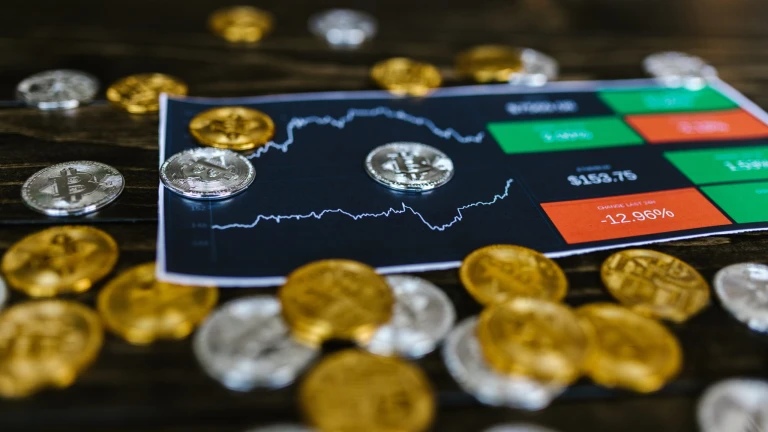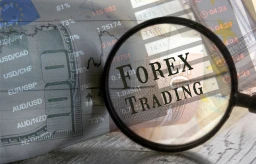What is Forex Trading? How does it work?

Forex trading is the simultaneous buying of one currency and selling of another. Currencies are traded through a broker or dealer, and are traded in pairs. For example, the EUR/USD pair is the euro and the U.S. dollar. When you trade in the forex market, you are essentially betting that the value of one currency will go up or down in relation to another. If you think that the euro will increase in value against the U.S. dollar, you would buy the EUR/USD pair. Conversely, if you think the euro will decrease in value against the U.S. dollar, you would sell the EUR/USD pair.
What is Forex Market?
Forex, also known as foreign exchange or FX trading, is the global market for currency trading. With a daily volume of more than $5 trillion, it is the largest and most liquid market in the world.
The forex market is open 24 hours a day from Sunday evening until Friday night, giving traders ample opportunity to make profits around the clock. However, this also means that forex markets are very volatile and subject to sharp movements, so traders must be careful to manage their risk.
What is Forex Trading?
In the most basic sense, forex trading is the buying and selling of currencies. This is done in order to make a profit off of the changes in value of different currencies. For example, if you think that the value of the US dollar is going to go up against the value of the Euro, you would buy dollars and then sell them when the exchange rate between the two currencies has increased. Conversely, if you think the dollar is going to lose value against the Euro, you would sell your dollars and then buy them back when the exchange rate has changed in your favor.
Of course, it’s not quite that simple. There are a lot of different factors that can affect currency values, and it’s not always easy to predict which way they will go. That’s where analysis comes in. A good forex trader will use both fundamental and technical analysis to try to figure out which way a currency is likely to move.
Fundamental analysis looks at things like a country’s economic indicators, political stability, and monetary policy. Technical analysis looks at things like charts and past price movements to try to identify patterns that might give clues about where a currency is headed next. By combining both types of analysis, a trader can get a pretty good idea of where a currency might be headed and make trades accordingly.
 Forex Trading
Forex Trading
How to start Trading Forex?
When it comes to forex trading, there are a few things you need to know before you get started. First and foremost, you need to understand what forex trading is and how it works. Forex trading is the act of buying and selling foreign currencies in order to make a profit. In order to do this, you need to have a firm understanding of the foreign exchange market.
The foreign exchange market is where all the action takes place. This is where you will buy and sell your currencies. The prices of the currencies are constantly changing, so you need to be aware of these changes in order to make a profit. There are a number of factors that can affect currency prices, such as political stability, economic news, and even natural disasters.
Once you have a firm understanding of how the foreign exchange market works, you can start looking into ways to get involved. There are a number of different ways to trade forex, so you need to find the method that best suits your needs and goals. You can trade through a broker, through a bank, or even online. Each method has its own advantages and disadvantages, so it’s important to research each one before making a decision. It takes practice and patience to be successful at forex trading.
Explore comprehensive trading strategies and insights with Mint CFD, a trusted partner in CFD trading.
What are the basic Forex Trading Strategies?
There are four basic Forex trading strategies that every trader should know about. These are:
The Trend Following Strategy: A trading method known as trend trading recommends buying an asset when its price trend is upward and selling it when it is downward, with the expectation that the trend will continue.
The Carry Trade Strategy: A currency carry trade is a tactic that entails borrowing money from a currency with a lower interest rate to pay for the purchase of a currency that offers a higher rate. Using this method, a trader tries to profit from the difference in rates. This, depending on the amount of leverage applied, might be rather large.
The Day Trading Strategy: Short-term trades known as day trades involve holding and liquidating holdings in the same trading day. A day trade can last for hours or minutes. To optimize their profits, day traders need to be proficient in technical analysis and familiar with key technical indicators. Day trades depend on small gains throughout the day, just like scalp trades do.
The Scalping Strategy: A scalp trade involves holding positions for no longer than a few seconds or minutes, and the profit potential is constrained in terms of pip quantities. Such deals are meant to be cumulative, which means that tiny profits made in each trade add up to a respectable sum at the end of the day or period of time. They are unable to tolerate high levels of volatility and depend on the predictability of price movements. As a result, traders sometimes limit their trades to the busiest trading periods of the day.
What are the advantages of Forex Trading?
Forex trading offers a number of advantages over other financial instruments, including:
Access to a global market: The foreign exchange market is the largest and most liquid financial market in the world. This means that there are always opportunities for traders to make profits.
High leverage: Forex brokers offer high leverage ratios, which can enable traders to make large profits from small price movements.
24-hour market: The forex market is a 24-hour market, which means that traders can trade around the clock.
Low transaction costs: Transaction costs in the forex market are usually very low. Thus, making it an attractive option for traders looking to take advantage of small price movements.
What are the disadvantages of Forex Trading?
There are several disadvantages of forex trading that should be considered before getting involved. These include the following:
Risk of financial loss – Like any investment, there is always the potential for financial loss when trading forex. This can be due to factors such as currency devaluation, political instability, and global economic conditions.
Time commitment – Forex trading requires a significant time commitment in order to be successful. This is due to the need to monitor currency markets constantly in order to take advantage of market opportunities.
High level of experience and knowledge – In order to be successful at forex trading, expertise is required. This includes an understanding of technical analysis, market sentiment, and risk management techniques.









